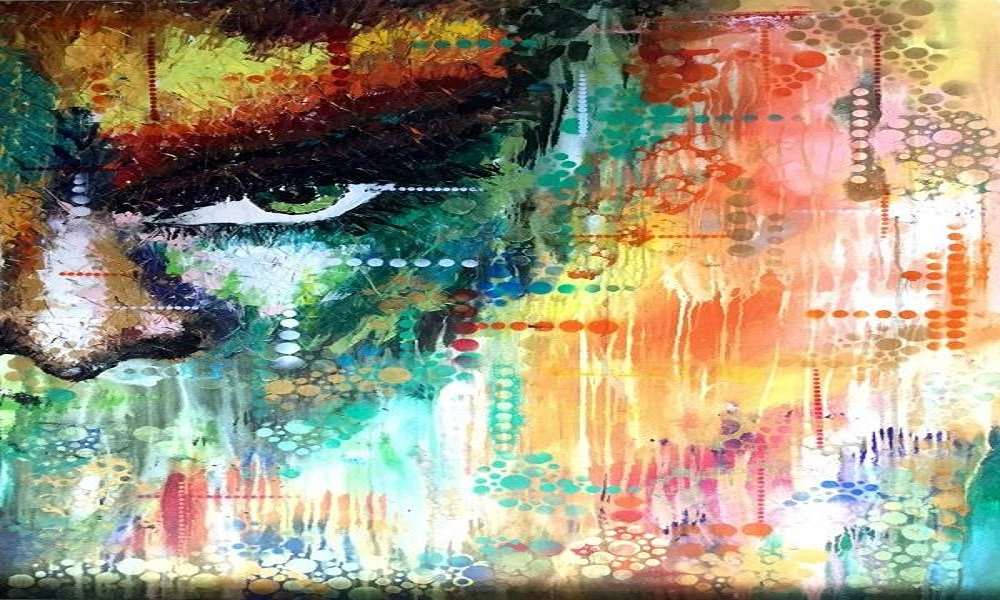
The chromatic assortment of artworks ranges from the traditional paintings to the contemporary sculptors and pieces of present times. As an art lover, every time I look to buy artwork from an online platform, the fear of me ending up with a fake artwork always scare the hell out of me.
And why shouldn’t I?
Fine Arts Experts Institute tells that more than 50% of the artworks present in the current market is fake.
Even reputed galleries like Christie’s and Sotheby’s have an infamous history of keeping fake artworks in their collection.
So, how to tell if a painting is real or fake? Seeking the answer to this question, I talked with a number of art gallery owners and artists and have come up with some astonishing tips that could actually help.
Get acquainted with the artist
Purchasing art can be both a step-by-step and a random action, depending entirely on what entices you.
Whatever it is, you have to fraternize with the artist first. Whenever you like a painting, make sure mingle yourself with the oeuvre of the artist.
Every artist has exclusive design patterns, unique signatures, and specific inclination towards particular motifs. And you don’t have to dive into some thick book of thousand pages to know the artist.
Instead, you can just search on the internet regarding the know-how of the artist. A small deviation or something out of the ordinary can be a red alert that you should not oversee.
Contact an expert and take a thorough assessment of the artwork you are interested in buying.
More visits more assurance
Being an art zealot, you may be passionate about paintings, artefacts, frescos, etc.; but is it enough? Do you think your passion is sufficing for you to purchase original artwork?
It certainly isn’t.
Having theoretical knowledge about something is quite different from practical experience. This said, you got to check out the paintings on your own.
Get out of your home and visit some local art galleries in your town/city. See how artists make those paintings, observe minute details like the texture of artwork, look at the labels, signatures, and similar aspects.
Talk casually with gallery staff and get to know more about the artwork being exhibited. How to tell if a painting is a real or fake can be unfolded by versing yourself with knowledge.
Is the artwork already part of a collection?
Always be proactive while on the quest to purchase a painting. People who copy original works and put them on sale sometimes do make mistake.
These forgers, a few times, try to sell imitations of artworks that are already part of an illustrious collection.
If you see an exquisite painting for a sale, google it and see if the same is included in some other assortment or not. If not, then the painting has more probability to be original.
Paperwork shouldn’t be ignored
How to tell if a painting is real or fake? What is the best way to do so?
If the seller presents to you the source of the painting that would certainly build up the credibility of an artwork.
An invoice, which is considered as authentic proof of purchase, increases the trust on the seller. But don’t be so sure of any paperwork.
Check out who was the previous seller and contact the dealer. Double confirming the provenance of an artwork hikes the likeability of artwork being real.
Don’t miss the tiniest minutiae
Yes, you love art, I know that. But to love art and to purchase art are quite distinctive from each other. While one is intuited and controlled by heart, other is totally managed by brain and wit.
Being an art lover, it is your responsibility to analyse the finest details like crosschecking the patina of the art piece and see; whether dust and dirt cover it, what colours are included, how is the texture, etc.
Another effective way to distinguish a fake piece from an original painting is to examine the canvas. If you are a pro art lover, you can do a thread count to see if the canvas is contemporary or antique.
If the seller claims that the artwork is from the 1800s, instead of agreeing, look at the back of the painting; if the canvas is stapled, the claim is a lie. You can also identify the age of the artwork by closely looking at the wood of the patina.
Also, keep a watch on how the frames are put together. Identifying what sort of nails and hangers are utilized may let you discern the real age of the painting you desire to purchase.
Another dog tag of fake pieces is the presence of hairs on the artwork that is the result of the utilization of ordinary paint brush that sticks to the canvas.
If you are looking to purchase an oil painting, you can use your nose. I am not kidding.
Oil takes a while to dry up. Artists who work on oil paintings know that the drying process takes days, weeks or more. But, the smell of oil paints goes away in years.
So, if the oil paint still smells, the work is probably a new one.
Forgers are extremely good at making copies of original paintings but they are not excellent. Always seek the consistency in the artwork that may be missed by the fakers either in the frame or a patina.
Final Words
Next time you are confused about how to tell if a painting is real or fake, read these tips. Love the art and be aware of the lousy sellers.
If you have any thoughts to share, comment below. Happy shopping and Thanks!





















